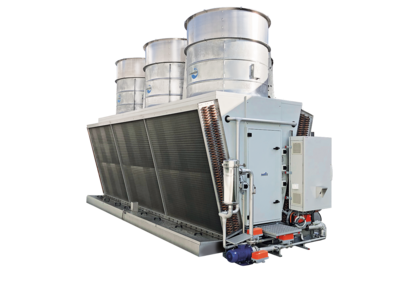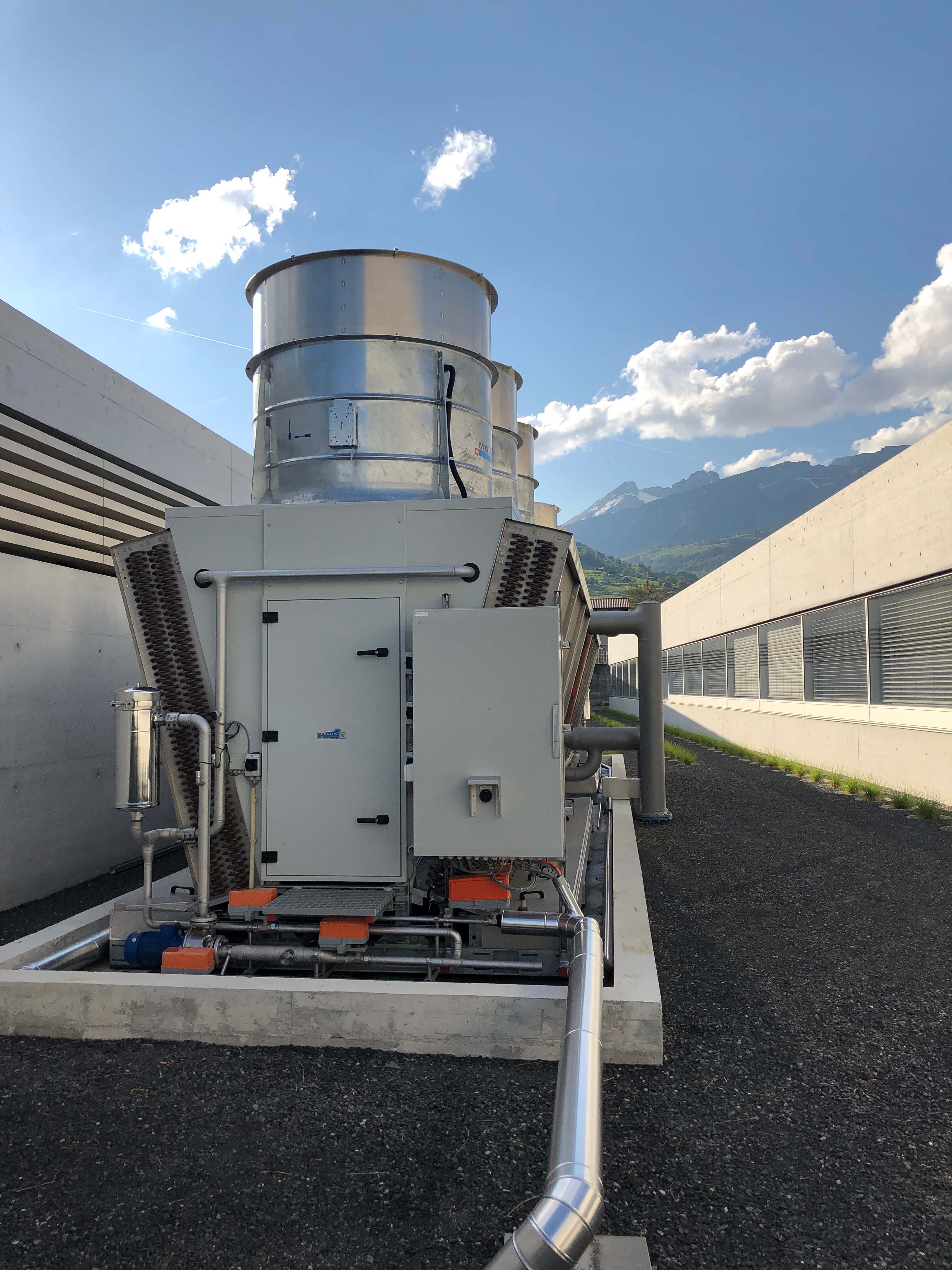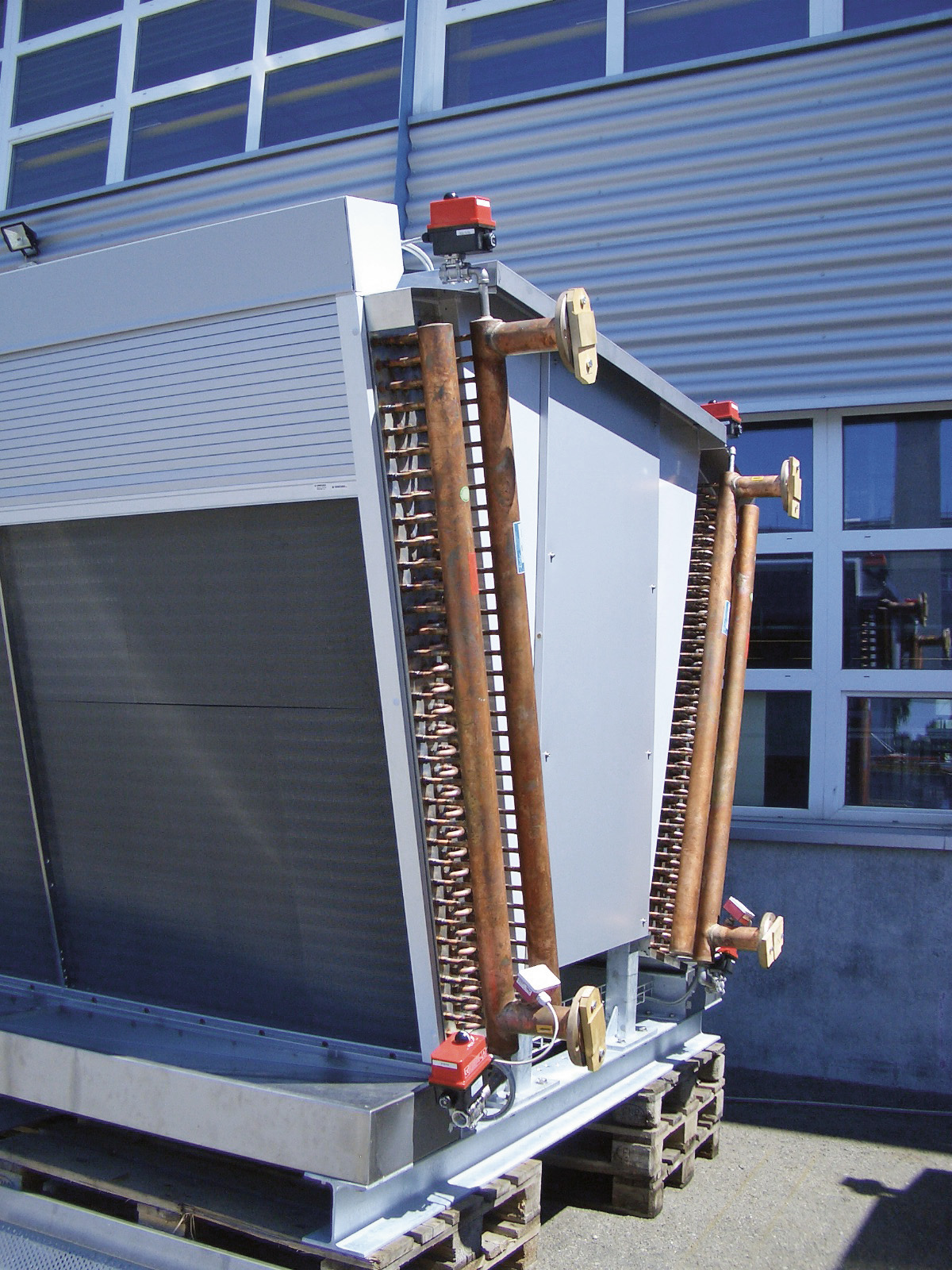Hybaco
Mountair has been designing and making hybrid dry coolers for over twenty years now. Each project that we have done is unique and has been designed, constructed and assembled precisely according to customer requirements. This is true for a single hybrid dry cooler with an output of 200 kW or even a multi-compressor refrigeration system with 6 MW. Mountair realises your individual needs.
Mountair’s expertise and service experience make it possible to react to events quickly. Be it replacement of wearing parts, system conversions due to changing influences on the operating parameters or repairs to system components due to defects or adjustments in the I&C area of regulation – Mountair is your competent partner.
Field of application
In most cases, hybrid dry coolers are installed in combination with cooling units. The dry coolers are the cooling source for the cooling units, to which the absorbed thermal energy can be transferred at a higher temperature level. The air required to cool the medium (water or water-glycol mixture) is loaded with significantly more thermal energy in hybrid dry coolers than in other recooling systems. Hybrid dry coolers manage with a lower air flow rate than dry coolers. This means fewer fans, which has a positive effect on noise levels and overall energy consumption.
Advantages
Compared to dry coolers and adiabatic dry coolers, hybrid dry coolers have some significant advantages. The main advantage is that significantly lower recooling temperatures can be achieved. This significantly improves the COP of the cooling unit. This reduces the power requirement and therefore also the operating costs of the entire refrigeration system. Furthermore, evaporative cooling can transfer a significantly higher thermal energy into the air flow than is possible with dry coolers or adiabatic dry coolers (see h-x diagram). Hybrid dry coolers are an extremely compact unit that makes it possible to dissipate large capacities in a small space.
Hybaco® dry coolers are equipped with their own regulation. All system parameters are monitored and the system is regulated according to specifications. The operating mode is adjusted depending on the outside temperatures, return flow temperatures or other external signals. Automatic regulation takes place in stages, first by increasing the air volume, then by switching on the humidification. Day and night programmes are programmed as standard. It is possible to implement remote maintenance. The regulation of the hybrid dry coolers is equipped with a BUS interface.
Various factors are crucial for the precise and customised design of hybrid dry coolers. The more detailed information is provided to the manufacturer, the better the initial designs and quotations can be prepared. The crucial design factors are listed below.
Mandatory information required:
Altitude above sea level
Wet bulb temperature
(Outside air conditions: temperature and humidity)
Recooling capacity
Feed/return temperatures
Medium (glycol content)
Other very important system parameters:
Permissible sound power
(sound pressure at a distance of 10 metres)
Hydraulic pressure loss
Required/maximum installation area
Maximum system height
System weight
The lower the wet bulb temperature, the more power can be dissipated with a dry cooler of the same design. The mean logarithmic temperature difference between the wet bulb temperature and feed/return temperature is decisive. The lower the feed/return temperatures are set, the higher the COP of the cooling unit. Larger dry coolers are therefore required to reach lower temperature levels, which generates higher investment costs but reduces operating costs over the entire service life of the system. This is an investment for the future.












